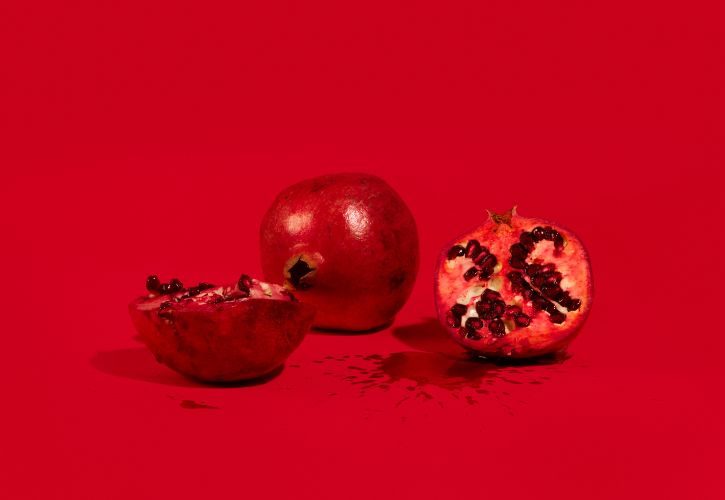Are Tampons Safe? Here’s What an OBGYN Wants You to Know

Renowned OB/GYN Jen Gunter has spent decades tackling damaging fallacies about women’s health and calling out companies and practitioners who try to cash in on our pain, confusion and anxiety. In this excerpt from her new book Blood, she takes on misinformation about tampons.
Scaring people about menstrual products seems to have become its own cottage industry, probably because both purity culture and chemophobia (irrational fear of chemicals) sell papers, get page clicks and generate views and likes. The way tampons especially are disparaged on social media—and even at times in the traditional media—you’d think they were toxic death sticks or incendiary devices. I suspect menstrual cups and discs get less negativity because they have a smaller market share, so are less likely to get page clicks for negative content. For now, anyway. Cups and most discs are also reusable, so they may also benefit from the “natural health” halo. But whatever the reason, certainly no menstrual product has been immune from these attacks. At times it seems like the groups involved won’t be happy until everyone is bleeding onto their clothes.
(Related: How Sexism Helped Our Species Thrive)
Are tampons safe?
There are no studies linking tampons, cups or discs with any serious health condition outside of the very rare toxic shock syndrome, yet myths about these products persist, with some common themes: chemicals are evil; ancient wisdom is powerful; following a specific ritual (usually giving something up) will help you achieve better health; natural is best; and companies that make “natural” products are benevolent (and almost always held to a much lower standard).
The emphasis on “natural” is one of the most malignant concepts in menstrual mythology, as natural also means “not interfered with.” Sit and let that wash over you. The implication is that menstrual products interfere with the vagina, removing its purity, its virginity, its perfection. “Natural” is deeply intertwined with purity culture, and that may be why this mythology speaks to us: Most of us, to some degree or another, have been affected by purity culture. After all, we’ve been steeping in it for centuries.
Menstrual charlatans promote the idea that heavy periods, pelvic pain, painful periods and cancer are caused by menstrual products, and insinuate that these products could harm future fertility. Because these conditions are biologically complex, and in the case of painful or heavy periods often go unaddressed, people who aren’t bound by the truth can easily step in and make false claims that sound reasonable. Putting something in the vagina means a potentially harmful synthetic substance is closer to its target, right? It’s easy to see how people reach this conclusion; after all, that’s how menstrual toxic shock syndrome started.
Many of these myths are like Halley’s Comet—they come around and around again with regularity. I’ve been watching this transpire since the late 1980s, and I’ve seen many of the same myths recycled, coming back each time with a different, scarier story. So let’s tackle the oldies but definitely not goodies, as well as the nasty newcomers.
Is there asbestos in tampons?
NO. In capitals for emphasis! This myth has been around since I was in medical training. I can imagine the back cover of the novel: “EvilCorp has been secretly putting asbestos in tampons to increase menstrual bleeding and hence sell more tampons. Jennifer, a plucky young med student, uncovers the incriminating documents while writing a paper on occupational exposure to asbestos, putting herself and those she loves in danger.” And voilà, we have a bestselling legal thriller. I’ll call it The Tampon Brief. (Sigh.) Asbestos is associated with health risks. It can cause cancer, but only after long-term exposure via inhalation, and no one is breathing in nonexistent tampon asbestos through their vagina.
As with almost all of these conspiracy theories, there has never been a fibre of proof (or logic): no lab analysis showing asbestos in tampons, no incriminating documents marked “Top Secret.” Someone, somewhere, made this up. It’s likely a mix of garden-variety purity culture, the toxic shock syndrome fears of the late 1970s and the increased awareness around the same time about the health risks of chronic exposure to asbestos.
Are there dioxins in tampons?
A lot less than in your food! According to the World Health Organization (WHO), “Dioxins are a group of chemically-related compounds that are persistent environmental pollutants (POPs).” They can cause cancer, damage the immune system and harm the reproductive system. They are hard for our bodies to break down and get rid of, so they can accumulate. Unfortunately, they’re everywhere. Most of our exposure comes from food, mainly from meat, dairy, fish and shellfish, because dioxins also accumulate in animals. The higher an animal is on the food chain, the more likely it is to contain dioxins.
As far as non-food exposure goes, dioxins are primarily a by-product of manufacturing, but they are also released into the environment from forest fires and volcanoes. They entered the tampon story because older methods of bleaching cotton and producing rayon created dioxins through the use of elemental chlorine. Bleaching methods have since changed, but there are still traces of dioxins in both tampons and pads—but not because of the manufacturing process. Rather, dioxins are in the raw material, be it cotton or wood pulp, because of pollution of the soil where the material was grown. And yes, that includes 100 percent organic cotton. In fact, in one study, an organic tampon had the greatest amount of dioxins.
However, most tampons have undetectable amounts of dioxins, and when detected, they are less than 0.2 percent of the allowable monthly intake. According to one group of researchers, the dioxin exposure from tampons is 13,000 to 240,000 times less than the dioxins we are exposed to by diet. For perspective, disposable diapers have the same traces of dioxins, but that doesn’t seem to get any attention, probably because purity culture isn’t involved.

Is there Glyphosate in tampons?
Glyphosate is an ingredient in some herbicides, most notably Roundup, so it may be used in farming the cotton plants destined for tampon glory (I, for one, appreciated cotton’s dedication to this important service for 35 or so years). There is a myth that cotton in tampons is dangerous because it contains glyphosate, and this seems to have been started by a video of a presentation at a media event that was amplified by those who profit from, you guessed it, organic tampons. Like the origin stories of many of these myths, it is like a bad game of telephone based on unverified claims. But because most people don’t have a good working knowledge of herbicides or agriculture, and because the WHO lists glyphosate as a possible carcinogen, and because it gets so much bad press (usually from those who profit from the bad press), it’s easy to see why those of us who aren’t experts in plant science could be frightened.
I’m most definitely not in Monsanto’s pocket (they’re the manufacturer of Roundup); however, there is a lot of science that disagrees with the WHO’s conclusion. For starters, here’s what the U.S. Environmental Protection Agency has to say: “There are no risks of concern to human health when glyphosate is used in accordance with its current label” and “Glyphosate is unlikely to be a human carcinogen.” In addition, glyphosate works in plants via the shikimate pathway, but mammals don’t have that pathway, so we humans can’t metabolize it. Also, glyphosate isn’t absorbed well across skin or mucosa such as the vagina. Glyphosate is also applied to the crops early in development, before the cotton fibers form. In addition, the amount that is applied is minute.
No one railing against so-called conventional tampons has ever provided legitimate evidence of a legitimate scientific concern with glyphosate. Regardless, several government agencies in Europe have evaluated tampons and found no evidence of glyphosate or its metabolite aminomethylphosphonic acid above the achievable limit of detection. If there are any residues present, they’re in the parts per billion and not something that can be found with state-of-the-art testing. (I went down a deep glyphosate cotton rabbit hole.) Wild claims with no backing science are a common tactic among those who promulgate these fears, and it’s shameful. The onus is on the people making the claim to provide their point, but based on the information I’ve just provided, it’s clear why they haven’t. They have no case.
Tampons contain titanium dioxide—is it dangerous?
In the summer of 2022, a TikTok video that went viral created panic about a brand of organic tampons containing the “dangerous” chemical titanium dioxide! How was that allowed? The story snowballed, with various people reciting the most common myths about tampons: “This must be why they make me bleed more” or “This might have caused the precancer on my cervix.” Of course, “banned in Europe” only added to the hype. Unscrupulous health influencers (who really should be labelled “vectors of disinformation”) amplified these unfounded fears, as did some in the media. I was even asked by a reporter how an organic product could have chemicals.
Le sigh. Everything is a chemical, and “organic” has nothing to do with titanium dioxide, which is not a pesticide. In fact, titanium dioxide, or TiO2, is a naturally occurring mineral and a common ingredient in many products because it has whitening and reflective properties. It’s used in toothpaste and some food, and to whiten the strings of tampons. It’s also a major ingredient of some sunscreens. The fact that toothpaste use is not associated with oral cancers or other health concerns should have alerted the original alarmist to the fact that the risks could hardly be greater with a tampon string. With toothpaste, it’s literally being rubbed into your gums! On a tampon string, the it. Also, glyphosate isn’t absorbed well across skin or mucosa such as the vagina. Glyphosate is also applied to the crops early in development, before the cotton fibers form. In addition, the amount that is applied is minute.
No one railing against so-called conventional tampons has ever provided legitimate evidence of a legitimate scientific concern with glyphosate. Regardless, several government agencies in Europe have evaluated tampons and found no evidence of glyphosate or its metabolite aminomethylphosphonic acid above the achievable limit of detection. If there are any residues present, they’re in the parts per billion and not something that can be found with state-of-the-art testing. (I went down a deep glyphosate cotton rabbit hole.)
Wild claims with no backing science are a common tactic among those who promulgate these fears, and it’s shameful. The onus is on the people making the claim to provide their point, but based on the information I’ve just provided, it’s clear why they haven’t. They have no case.
It’s true that TiO2 was banned in the European Union. They did so because recent studies showed that when rats were fed massive amounts of TiO2 for several months, they might theoretically develop some bowel issues. Interestingly, the EU panel didn’t identify any actual health concerns to prompt the ban. Health Canada reviewed the same data and concluded there was no evidence of cancer risk in animal studies with food-grade TiO2, no changes to DNA in animal studies (something that could signify a cancer risk) and “no adverse effects in animal studies on reproduction, development, immune, gastrointestinal or nervous systems, or general health when rats were exposed from pre-conception to adulthood.” The International Agency for Research on Cancer (IARC) does classify TiO2 as a Group 2B carcinogen, meaning “possibly carcinogenic to humans,” but that applies specifically to inhalation. Though you might hear advice to let your vagina “breathe” by not wearing underwear, inhalation isn’t a method by which a chemical can get from the outside world through the vagina and into your body.
But I get it, these viral claims are scary, and the first piece of information you receive about something can be so hard to unlearn. And it sounds truthy: “Europe banned titanium dioxide, so it must cause harm!” However, the science is clear here. TiO2 can’t dissolve in water, and it most certainly would have to dissolve to get off the tampon string and into the vaginal mucosa.
In addition, fabrics with TiO2 have been tested by washing them repeatedly, and very little of the substance is released. Your tampon string isn’t being agitated and exposed to detergent, as it would be in a washing machine; your mouth, on the other hand, goes through similar agitation when you’re brushing your teeth, and yet TiO2 is considered safe in toothpaste. Rest assured, the minute amount of TiO2 on a tampon string isn’t leaching into the vagina. Also, cervical precancer and cancer are not caused by TiO2; they are due to infection with specific strains of human papillomavirus (HPV). Tampons have never been implicated. The best way to protect against cervical cancer is to get vaccinated against HPV.
Are organic tampons safer?
No study has ever demonstrated this. In fact, in some studies looking at residues, organic products fared worse. If you want to buy organic, buy organic, but there is no medical reason to do so for vaginal, uterine, ovarian or hormonal health.

Excerpted from Blood by Dr. Jen Gunter. Copyright © 2024 Dr. Jen Gunter. Published by Random House Canada, a division of Penguin Random House Canada Limited. Reproduced by arrangement with the Publisher. All rights reserved.




